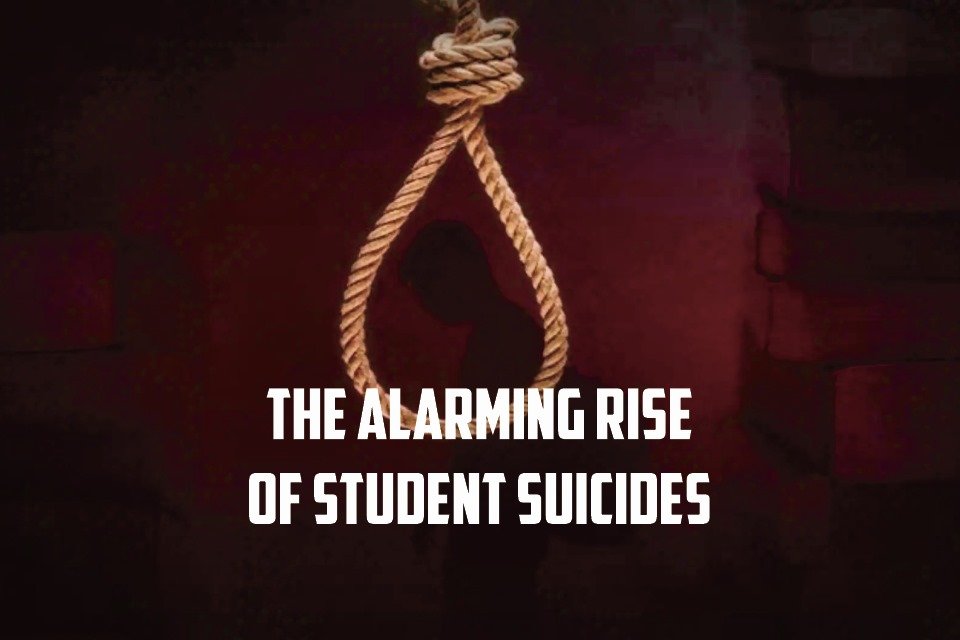India is facing a crisis that goes beyond the alarming figures we often see in headlines. The recent report released at the Annual IC3 Conference and Expo 2024, titled “Student Suicides: An Epidemic Sweeping India,” paints a harrowing picture of a nation in distress. Based on data from the National Crime Records Bureau (NCRB), this report reveals a chilling trend – student suicides in India have been rising at an alarming rate, far outpacing both population growth and overall suicide trends.
The numbers are nothing short of shocking. While overall suicide rates in the country have increased by 2 percent annually, student suicides have surged by a staggering 4 percent each year. This statistic is not just a number; it’s a reflection of the unbearable pressure our youth are under – a pressure that many find too heavy to bear. Over the past two decades, the rate of student suicides has doubled, leaving a trail of shattered dreams and broken families.
In 2022 alone, 13,044 students took their own lives. That’s more than 35 young lives lost every single day. To put this in perspective, the population of 0-24-year-olds has slightly decreased over the past decade, from 582 million to 581 million. Yet, during this same period, the number of student suicides has nearly doubled. What is causing our students to lose hope at such an alarming rate?
The report offers a grim insight into the gender dynamics of this crisis as well. In 2022, male students accounted for 53 percent of the total student suicides. Between 2021 and 2022, while male student suicides saw a slight decrease of 6 percent, female student suicides rose by 7 percent. This increase in female student suicides is particularly concerning, as it highlights the unique and growing pressures faced by young women in our society.
One of the most disturbing aspects of this epidemic is the likelihood of under-reporting. Cultural stigma, fear of social ostracism, and inadequate mental health resources mean that the true scale of this crisis may be even worse than the data suggests. This under-reporting is a silent tragedy that further masks the deep-rooted issues plaguing our education system and society at large.
So, what is driving this surge in student suicides? The answer is complex and multifaceted. The relentless pressure to perform academically, societal expectations, lack of adequate mental health support, and a rigid education system that often prioritises grades over well-being are just a few of the many factors at play. For many students, the fear of failure is overwhelming. They are caught in a vicious cycle where success is narrowly defined, and anything less is seen as a failure – a failure so catastrophic that it leads some to take their own lives.
The role of the education system cannot be overstated. In a country where the IITs and medical colleges are seen as the holy grail of success, students are often pushed to their limits. Coaching centres mushroom across the nation, feeding off the dreams and anxieties of young minds. But at what cost? The cutthroat competition leaves little room for creativity, individuality, or mental peace. It’s a system that is failing our youth, pushing them to the brink instead of nurturing their potential.
Moreover, the societal expectations placed on students are crushing. In many cases, parents, driven by the desire to see their children succeed, inadvertently add to the pressure. The fear of disappointing one’s family, the shame of not living up to societal standards, and the isolation that comes with being unable to cope, all contribute to the rising tide of despair among students.
What we are witnessing is not just a series of tragic incidents but a systemic failure. The increase in student suicides is a reflection of a society that has lost sight of what truly matters – our children’s well-being. It’s a call to action for all of us – parents, educators, policymakers, and society at large – to rethink our approach to education and mental health.
We need a paradigm shift. It’s time to redefine success, to create an education system that values creativity, emotional intelligence, and mental well-being as much as academic achievement. We need to equip our schools with better mental health resources, reduce the stigma around seeking help, and foster an environment where students feel supported, not pressured.
The rising number of student suicides is a national tragedy, one that demands urgent attention and action. We cannot afford to lose more young lives to a system that is failing them. It’s time for India to wake up, to listen to the cries for help from its youth, and to take decisive action to prevent this silent epidemic from claiming more lives.
Middle Class Hub, as India’s first platform exclusively for the middle class, stands committed to raising awareness and advocating for change. We believe that every student deserves a future filled with hope, not despair. Let us come together to build a society where our children can thrive, free from the pressures that are driving them to such extreme measures. Because no exam, no career, no societal expectation is worth the life of a young person.




